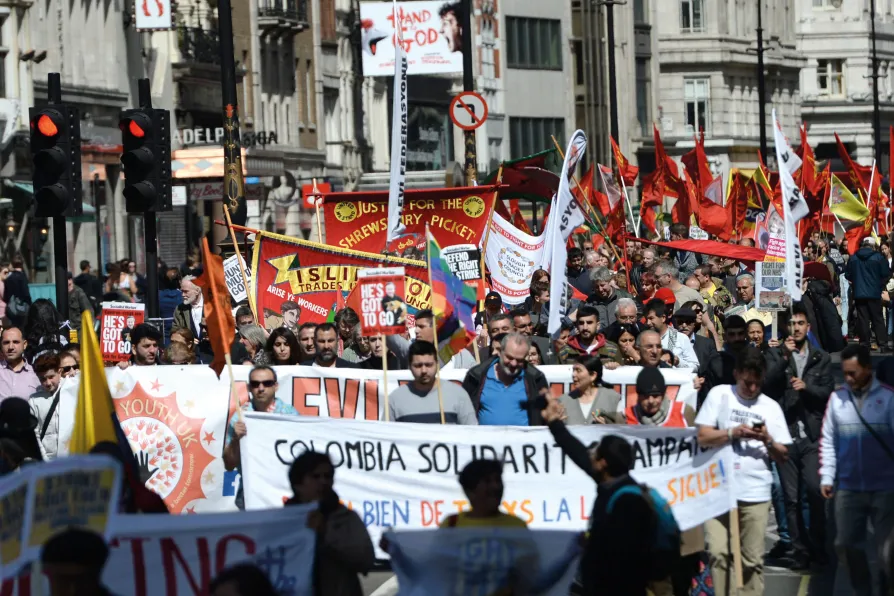Far-right forces are rising across Latin America and the Caribbean, armed with a common agenda of anti-communism, the culture war, and neoliberal economics, writes VIJAY PRASHAD

 CLASS SOLIDARITY: Thousands march to Trafalgar Square in central London, to celebrate workers’ achievements at a May Day rally
CLASS SOLIDARITY: Thousands march to Trafalgar Square in central London, to celebrate workers’ achievements at a May Day rally
MAY DAY this year comes in a time of growing struggle — domestically and internationally. The ever-growing number of industrial disputes has seen a growth of union membership and activity in many areas as workers seek to deal with the ever-increasing cost of living alongside the growing crisis in public services.
Government interference in those services with the backdrop of growing privatisation been disastrous as one failing Tory government has followed another. The massive support for different worker disputes shown across the country, with fellow trade unionists, trades councils and the public joining picket lines, has been marked.
It has raised the need for the ability to take solidarity action, particularly for the strong to support the weak. The need to remove the legal shackles on trade unions have been a focus for the trade union movement.

In his May Day message for the Morning Star, RICHARD BURGON says the call for peace, equality and socialism has never been more relevant

As global fascism grows, ROGER McKENZIE urges the left to reclaim May Day’s revolutionary roots — not as an act of nostalgia, but as fuel for building a ‘community of resistance’ against exploitation and the rise of fascism












